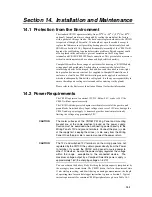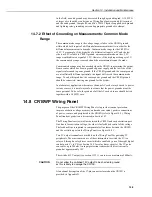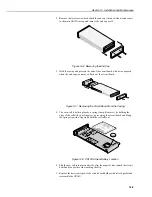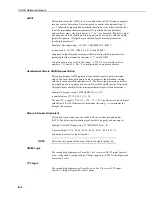
Appendix A. Glossary
A-5
Signature
A number which is a function of the data and the sequence of data in memory. It
is derived using an algorithm which ensures a 99.998% probability that if either
the data or its sequence changes, the signature changes.
Synchronous
The transmission of data between a transmitting and receiving device occurs as a
series of zeros and ones. For the data to be read correctly, the receiving device
must begin reading at the proper point in the series. In synchronous communica-
tion, this co-ordination is accomplished by synchronising the transmitting and
receiving devices to a common clock signal (see also Asynchronous).
Throughput
The throughput rate is the rate at which a measurement can be made, scaled to
engineering units and the reading stored in Final Storage. The CR10X has the
ability to scan sensors at a rate exceeding the throughput rate (see Sample Rate).
The primary factor affecting throughput rate is the amount of processing specified
by the user. In normal operation, all processing called for by an instruction must
be completed before moving on to the next instruction. The absolute maximum
throughput rate for a fast single-ended measurement is approximately 256 meas-
urements per second (12 measurements, repeated about 21 times per second). This
theoretical maximum is only possible if the CR10X’s self-calibration function is
suspended (this is accomplished by entering Instruction 24 into Program Table 2
while leaving the Execution Interval at zero so that Program Table 2 never
executes).
When the self-calibration function is operating, the maximum throughput rate for
a fast, single-ended measurement is 192 measurements per second (12 measure-
ments, 16 times per second).
Window
Each line of information in a functional mode is referred to as a window. For
example, the first window in *5 Mode shows the current time, the second window
allows you to view and alter the year, and so on.
















































